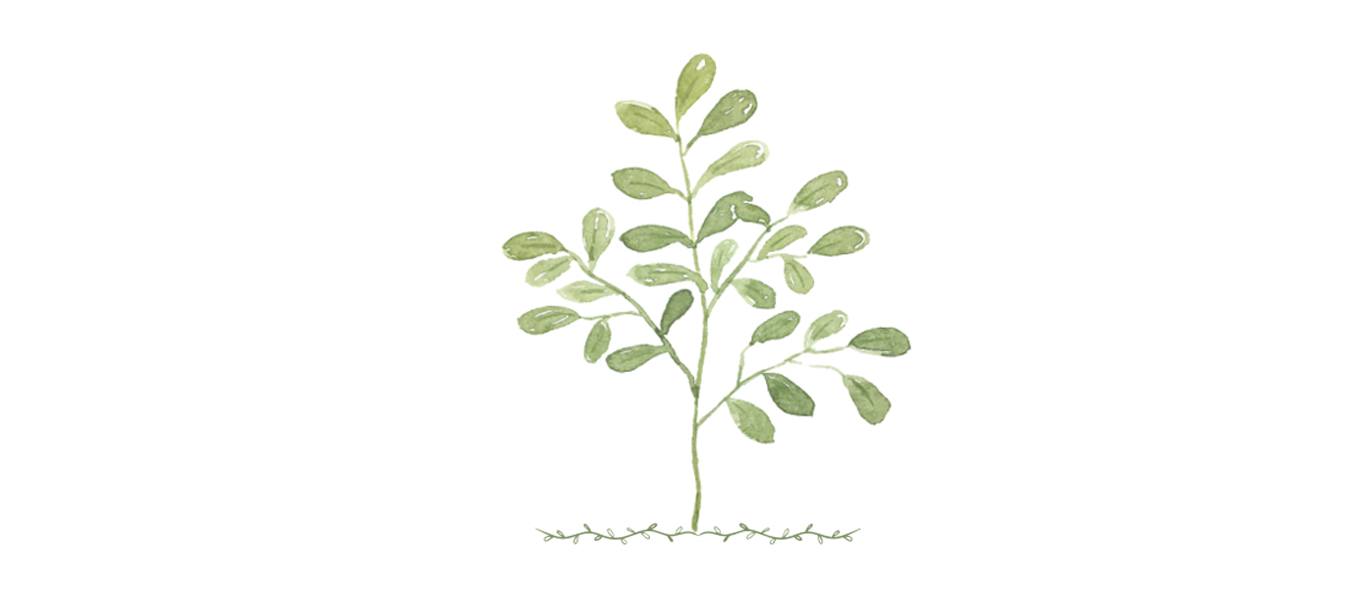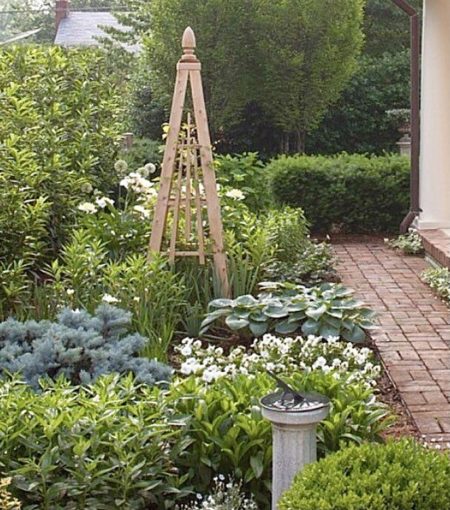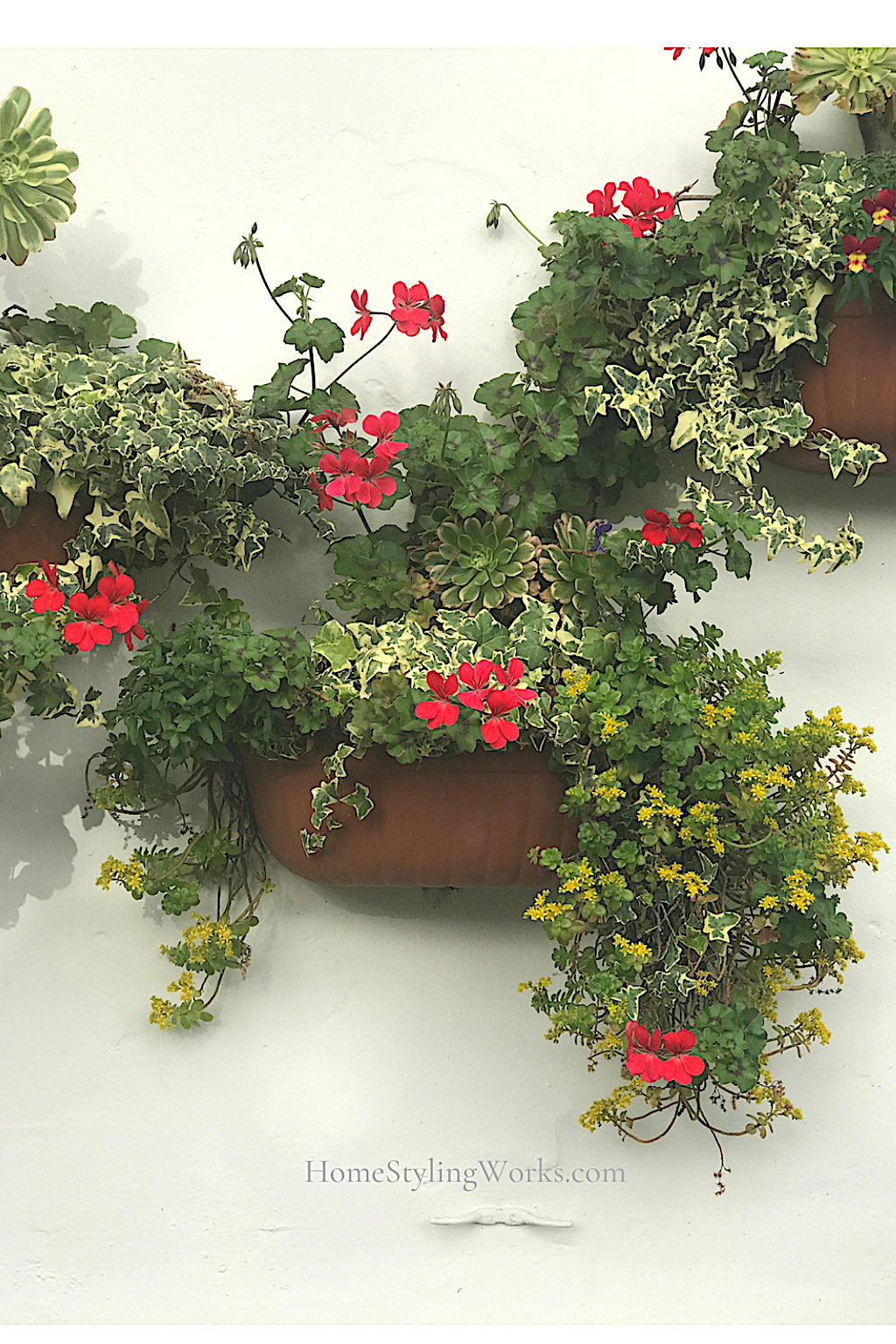ADD YEAR-ROUND INTEREST WITH GARDEN “TUTEURS”
Today, I’m talking about Vertical Gardening. Specifically, “elevating your gardening status” with TUTEURS.
So what exactly is a “tuteur”? According to Wiktionary, a tuteur (pronounced “two-tour“) is a three- or four-sided pyramid or obelisk-like trellis designed to help train climbing plants. The name tuteur is French for “to train” or “tutor”.
Even if you’ve never heard of tuteurs before, you’ve probably seen them in garden centers and perhaps even in actual gardens. Sometimes they’re called “obelisks”. But no matter what they’re called, they’re a fabulous way to add height and beauty to your garden. Think of them as freestanding trellises that have two functions: support and visual interest. The top image features tuteurs in the beautiful public gardens at Wave Hill in the Bronx, New York (photo credit: Janet Davis).
I discovered tuteurs on a visit to gardens in England in the 1990s and, shortly thereafter, began incorporating them into my garden designs.
Case in point: I came across the photo below of the garden I created in Saratoga Springs, New York, where I transformed 1/4 acre of boring grass into a European-inspired garden. Here’s what the garden looked like “before” (the photo was taken in 1998 – before digital photography). I was inspired by visits to gardens in England and France and wanted to transform the large swath of grass into a series of garden “rooms”, with perennial gardens and a ‘potager’ (kitchen garden).

Below are a couple of views of the “after” gardens. Sometimes first-time visitors to my garden would jokingly say “Whoa! Did you plant the Garden of Versailles in suburbia?!” I must admit, it was a pretty ambitious understaking for a suburban back yard. Now here’s where the tuteurs come in. The kitchen garden along the back perimeter featured two wood tuteurs that I painted a beautiful mossy green color to accent the greenery surrounding the garden.

Above and below are two views of the same tuteurs. I incorporated the pair of tuteurs as focal points in the kitchen garden. Not shown are the sweet pea vines I would plant in spring, followed by climbing French green beans in summer. I also planted low-mounding lavender and nasturtium flowers around the base of each tuteur, to soften the edges. The tuteurs were secured in the ground with wire and stakes. I also put plastic bags around the feet before staking them in the ground, to prevent the wood legs from rotting.

What I love about tuteurs are the classical proportions and how they offer a place to rest the eye – especially in a long expansive garden bed. They also add interest to the garden, even in the winter months. This tall wooden tuteur is very similar to the ones I painted green in my garden.
MATERIAL LESSONS
Tuteurs come in a variety of materials – wood, wrought iron or steel and willow being the most common. They can also be made from salvaged branches for a very rustic look.
WOOD TUTEURS
I’ve always admired the gardens of antiques dealer Loi Thai. Below is an image from his former Maryland garden, which prominently features a stunning natural wood tuteur.
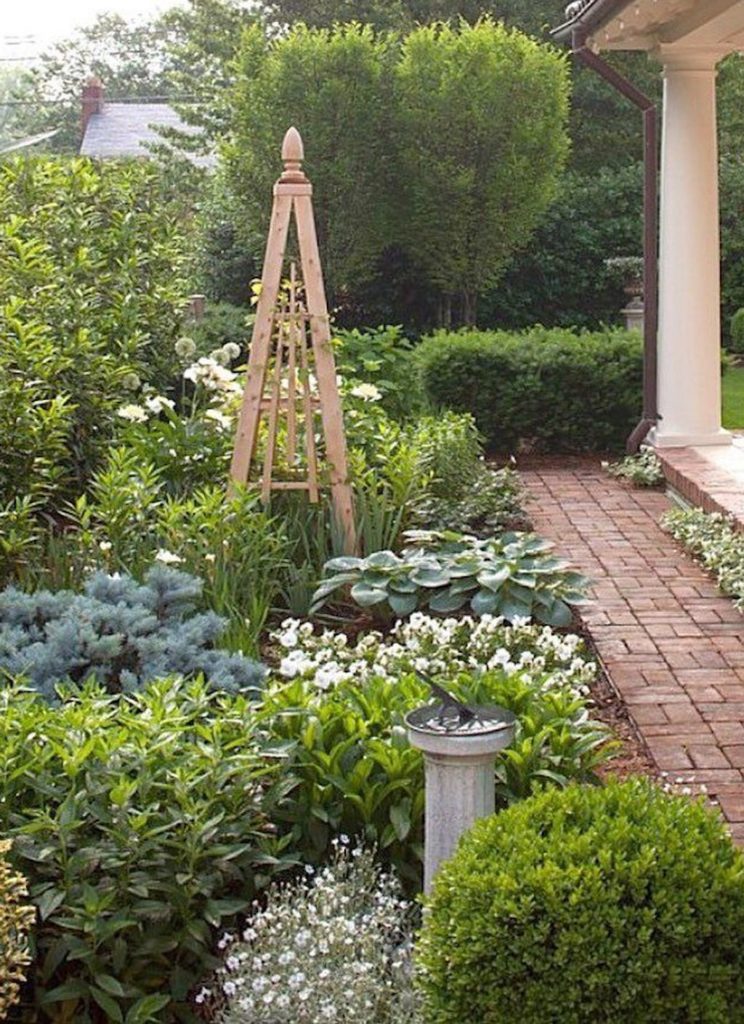
Wood tuteurs can be unfinished and left to age naturally (as in Loi Thai’s garden above and in the photo below left). They can also be painted in a fun color, like the chartreuse tuteur below right.
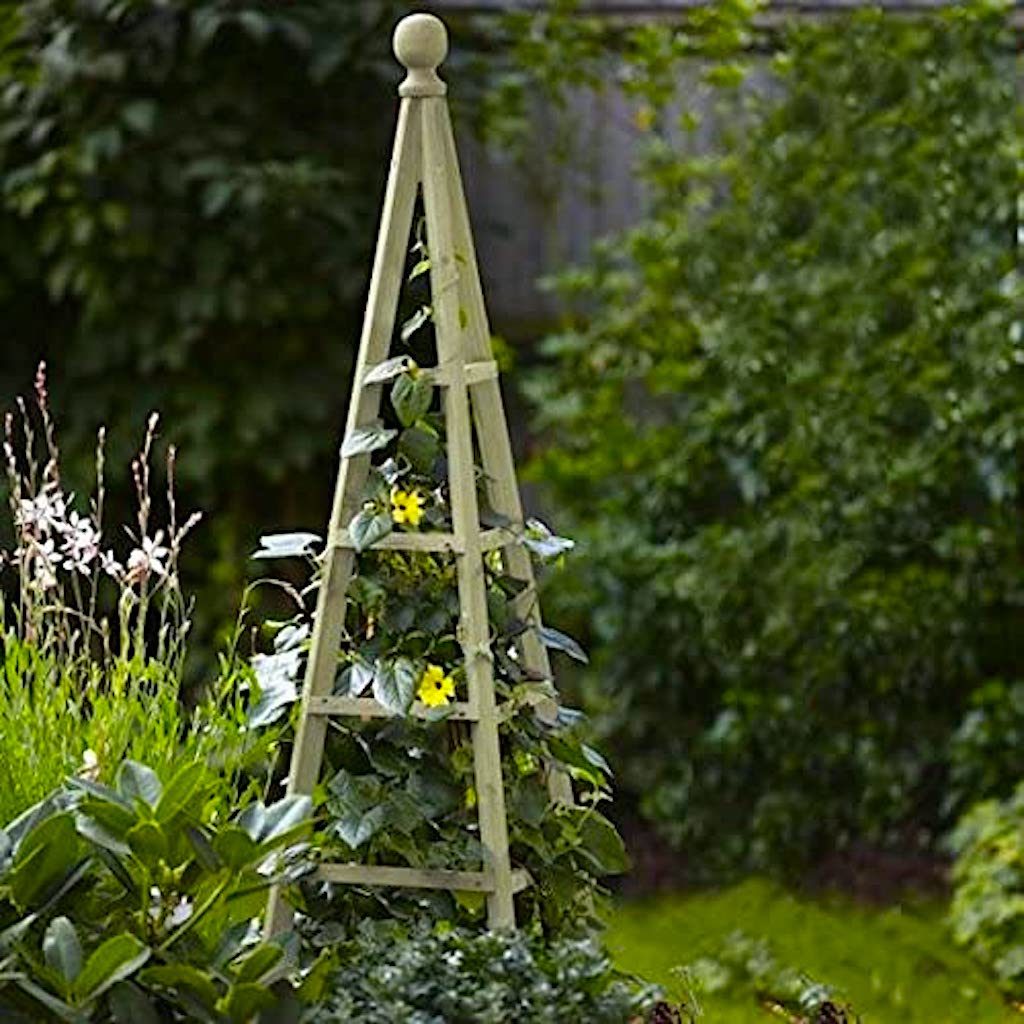
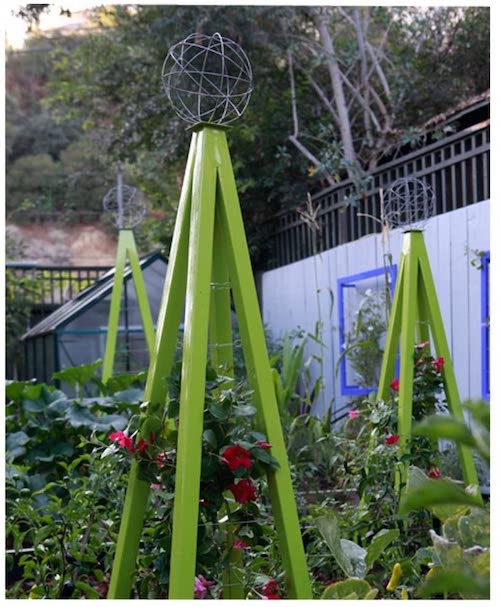
The image below features another view of the tuteurs at the Wave Hill specimen gardens. I love how the varying heights of perennial and edible plants (such as the Black Tuscan Kale) “frame” the view around the tuteur. Also note that the tuteur doesn’t have any vines growing on it – the tuteur itself is treated like a garden sculpture. Love it.

METAL TUTEURS
Metal is a practical choice for tuteurs, especially in containers. A hallmark of metal tuteurs or obelisks is the addition of an interesting finial. The metal obelisks below would look fantastic as a pair, flanking a front entry in a traditional style home, planted in a beautiful container. Links to the obelisks shown below are here and here.
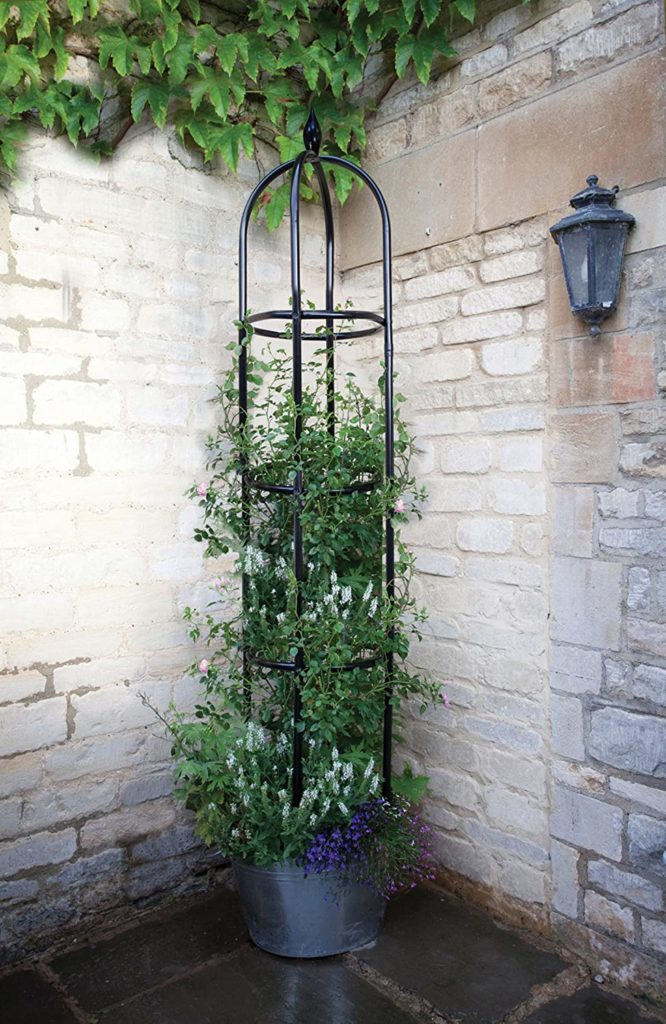

My favorite example of metal tuteurs in the garden is the image below, featuring the gorgeous kitchen gardens of the inimitable Ina Garten (who is not only a best-selling cookbook author, but an incredible gardener!) I love the color of this tuteur, which looks to be custom made in copper that’s been left to weather to a verdigris patina. I sourced a similar blue tuteur here, which would add a nice pop of color to your garden (and it’s over 7 feet tall – a great statement piece!)

WILLOW TUTEURS
Tuteurs in a natural willow material fit right into a cottage or country garden. Below are two versions of willow tuteurs. They can either be left unadorned (photo left) or utilized to train climbing sweet pea vines (photo right).
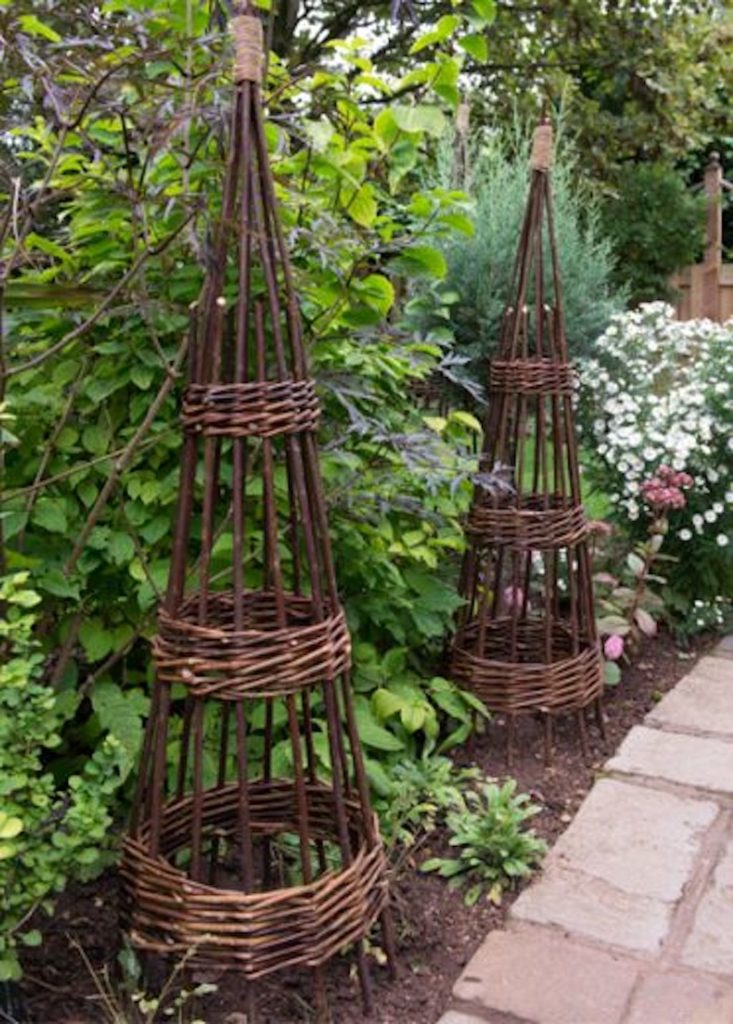
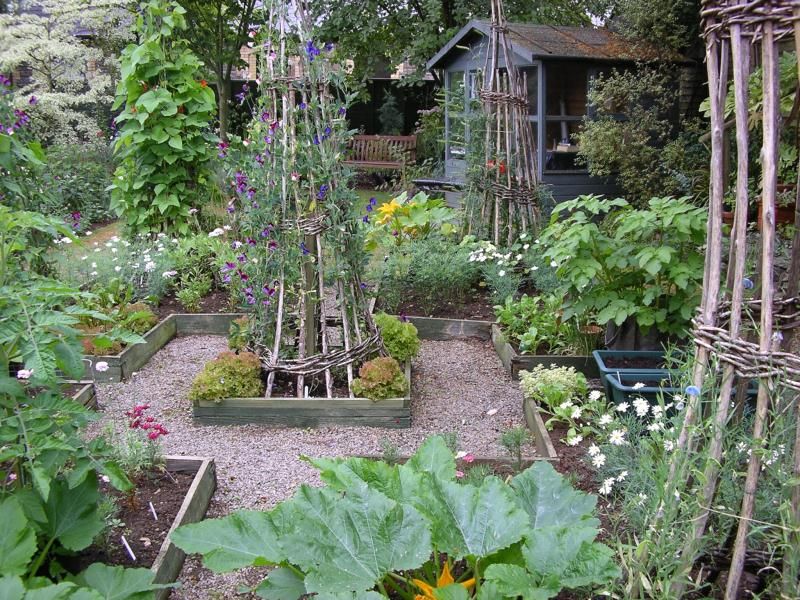
BELOW: I’m growing roses on the willow obelisk in a large container in my current garden. My goal is to not cover the obelisk completely, so some of the pretty willow detail is still visible. The climbing roses are pretty happy, so I may switch out the willow obelisk for a taller iron tuteur (the roses are growing fast and furious!) Here’s a link to a similar willow obelisk shown in my garden.

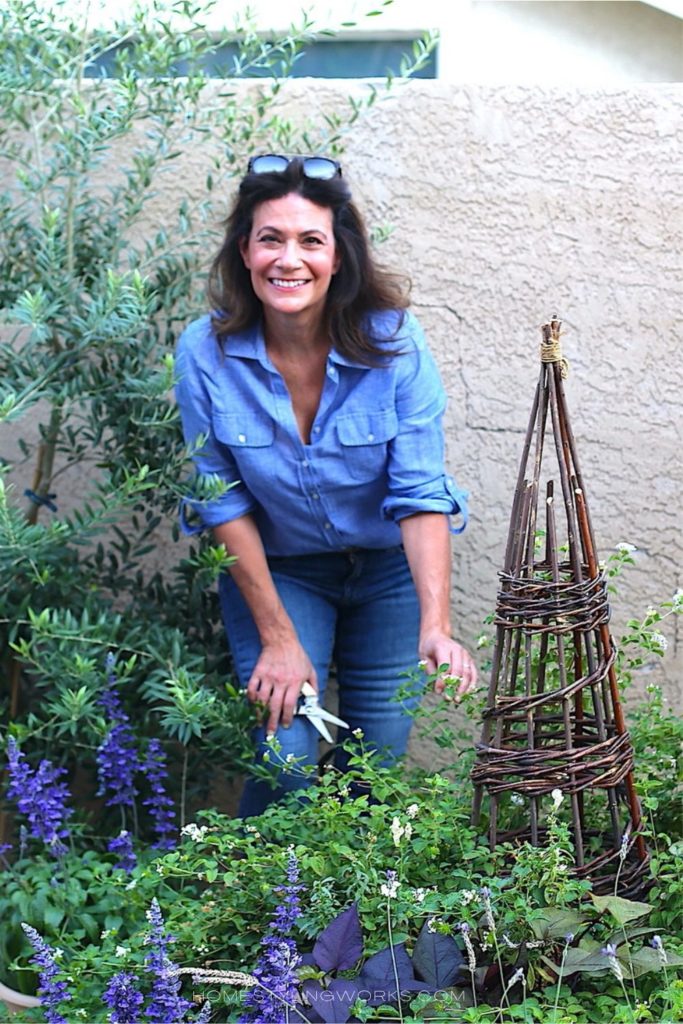
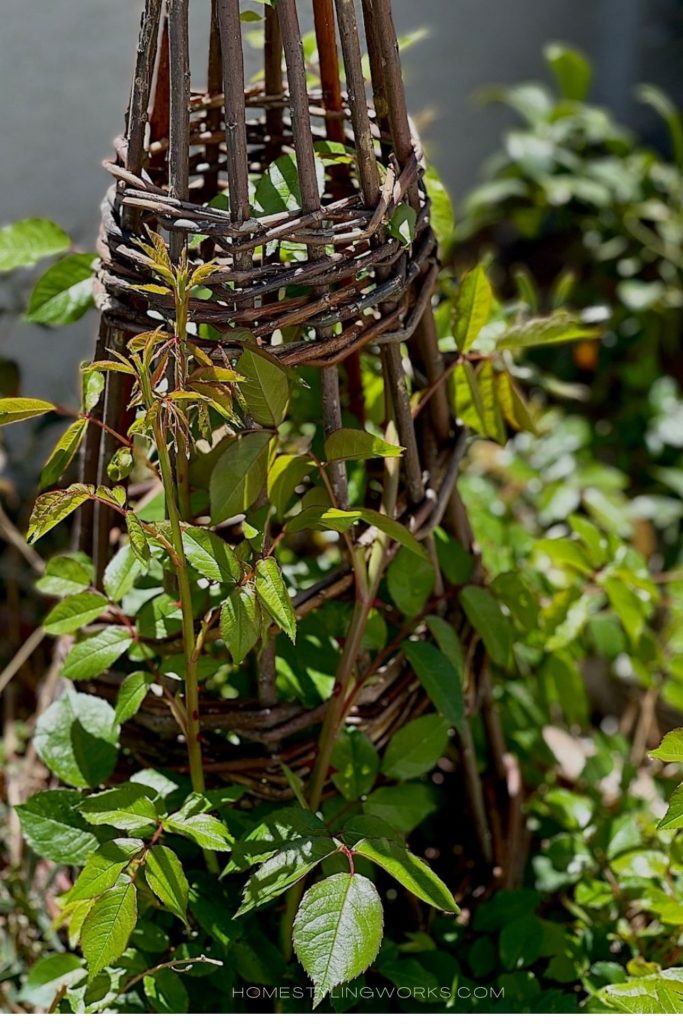
RUSTIC BRANCHES TUTUER
Tuteurs can be hand-crafted using fallen branches (there are a lot of online tutorials on how to make these). A great example is featured in the photo below left, in the Vermont gardens of noted author and master gardener Ellen Ecker Ogden. I had the opportunity to work with Ellen a few years ago when I produced a story on her gardens for Country Gardens magazine. I can attest that her gardens in person are incredible! I love the spilling thyme surrounding the obelisk, and that the structure isn’t completely covered in vines, so you can appreciate the rustic materials. The center and right images are these rustic twig tuteurs, from White Flower Farm.
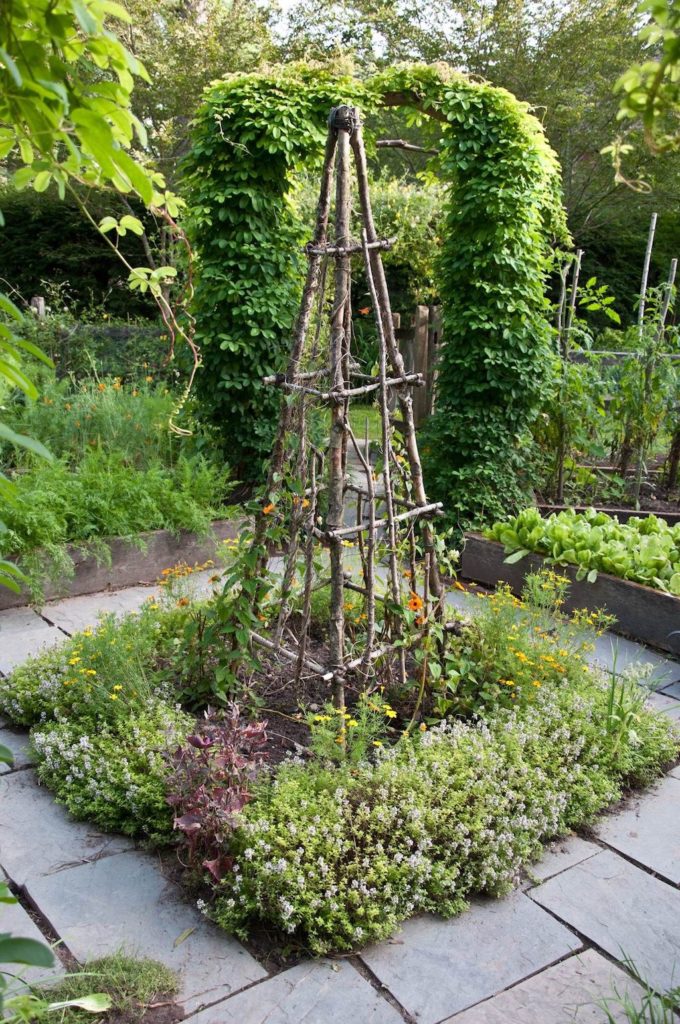
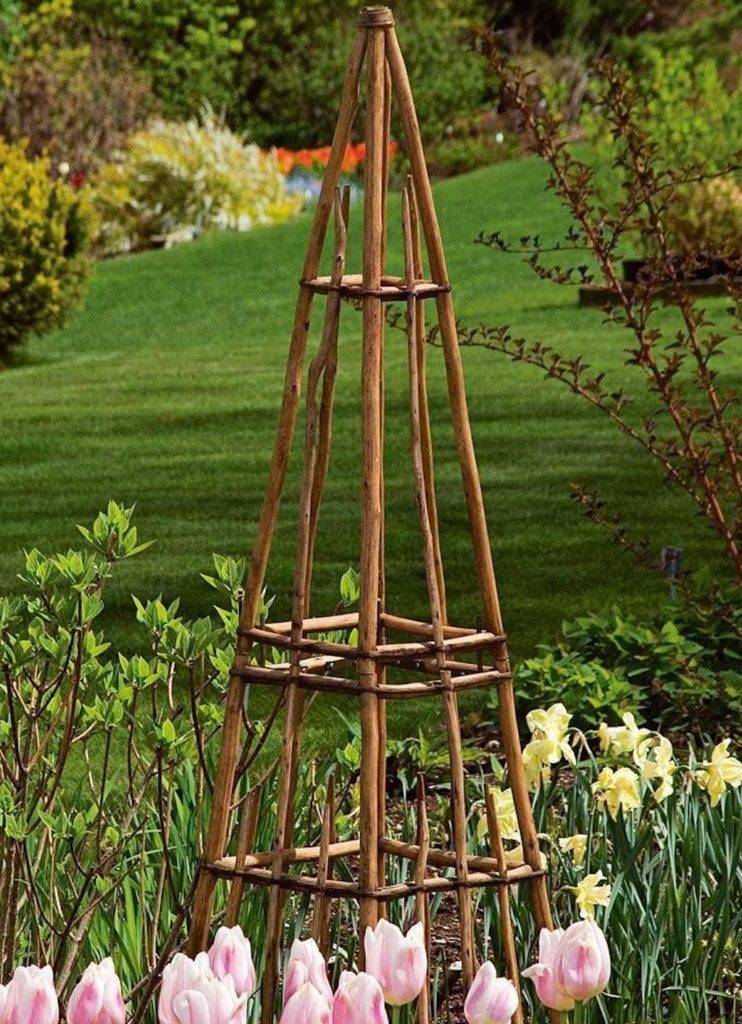
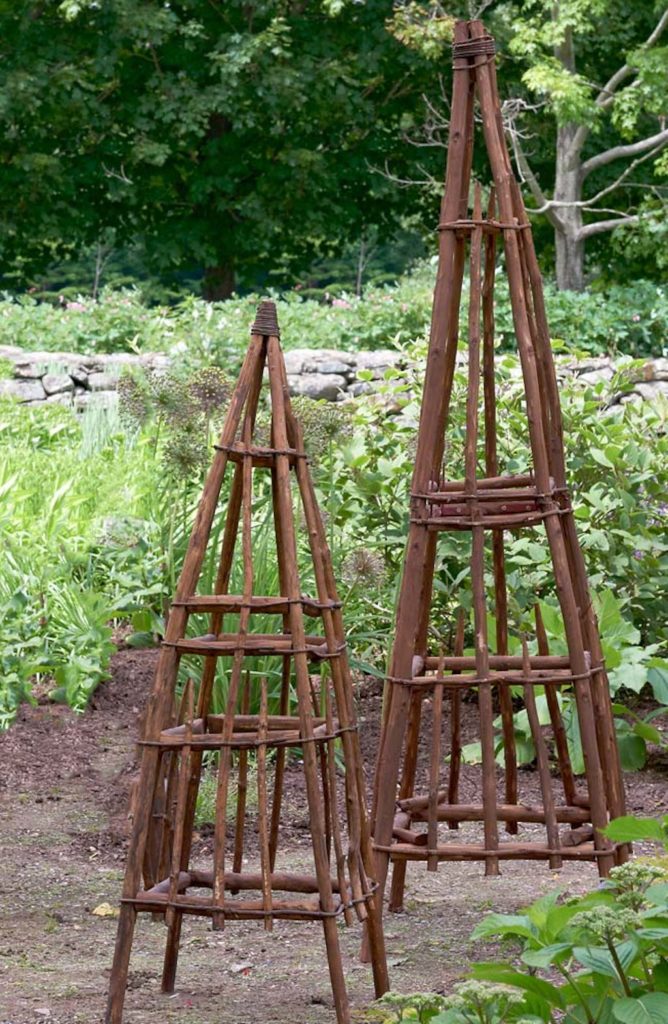
I hope this post has inspired you to add structure and a focal point in your garden with obelisks and tuteurs. In my next post, I’m going to share how you can add visual interest to your garden with tuteurs in planters.
